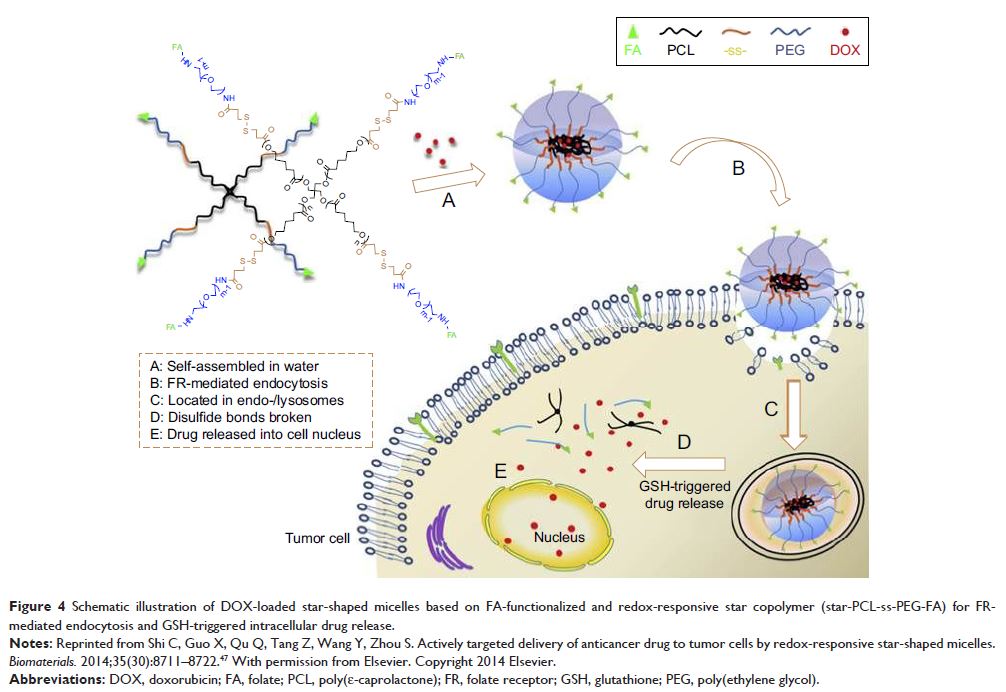108985
论文已发表
注册即可获取德孚的最新动态
IF 收录期刊
- 3.4 Breast Cancer (Dove Med Press)
- 3.2 Clin Epidemiol
- 2.6 Cancer Manag Res
- 2.9 Infect Drug Resist
- 3.7 Clin Interv Aging
- 5.1 Drug Des Dev Ther
- 3.1 Int J Chronic Obstr
- 6.6 Int J Nanomed
- 2.6 Int J Women's Health
- 2.9 Neuropsych Dis Treat
- 2.8 OncoTargets Ther
- 2.0 Patient Prefer Adher
- 2.2 Ther Clin Risk Manag
- 2.5 J Pain Res
- 3.0 Diabet Metab Synd Ob
- 3.2 Psychol Res Behav Ma
- 3.4 Nat Sci Sleep
- 1.8 Pharmgenomics Pers Med
- 2.0 Risk Manag Healthc Policy
- 4.1 J Inflamm Res
- 2.0 Int J Gen Med
- 3.4 J Hepatocell Carcinoma
- 3.0 J Asthma Allergy
- 2.2 Clin Cosmet Investig Dermatol
- 2.4 J Multidiscip Healthc

刺激响应性聚合物胶束用于药物递送和癌症治疗
Authors Zhou Q, Zhang L, Yang T, Wu H
Received 2 December 2017
Accepted for publication 13 March 2018
Published 18 May 2018 Volume 2018:13 Pages 2921—2942
DOI https://doi.org/10.2147/IJN.S158696
Checked for plagiarism Yes
Review by Single-blind
Peer reviewers approved by Dr Cristina Weinberg
Peer reviewer comments 2
Editor who approved publication: Dr Linlin Sun
Abstract: Polymeric micelles (PMs) have
been widely investigated as nanocarriers for drug delivery and cancer
treatments due to their excellent physicochemical properties, drug loading and
release capacities, facile preparation methods, biocompatibility, and tumor
targetability. They can be easily engineered with various functional moieties
to further improve their performance in terms of bioavailability, circulation
time, tumor specificity, and anticancer activity. The stimuli-sensitive PMs
capable of responding to various extra- and intracellular biological stimuli
(eg, acidic pH, altered redox potential, and upregulated enzyme), as well as
external artificial stimuli (eg, magnetic field, light, temperature, and
ultrasound), are considered as “smart” nanocarriers for delivery of anticancer
drugs and/or imaging agents for various therapeutic and diagnostic
applications. In this article, the recent advances in the development of
stimuli-responsive PMs for drug delivery, imaging, and cancer therapy are
reviewed. The article covers the generalities of stimuli-responsive PMs with a
focus on their major delivery strategies and newly emerging
technologies/nanomaterials, discusses their drawbacks and limitations, and
provides their future perspectives.
Keywords: nanomedicine,
polymeric micelles, stimuli-responsive, drug delivery, cancer therapy
